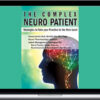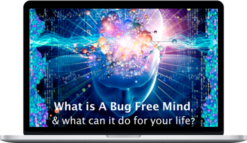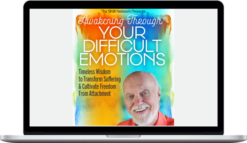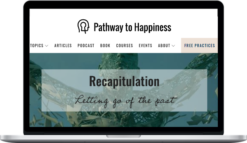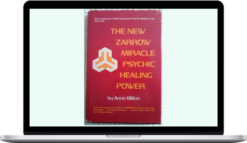Patti Ashley – Toxic Shame in Clinical Practice: Help Clients Release Shame, Get Unstuck and Improve Treatment Outcomes
$199.99 $74.00
» Within 21 days
Description
Patti Ashley – Toxic Shame in Clinical Practice: Help Clients Release Shame, Get Unstuck and Improve Treatment Outcomes
Description Of Toxic Shame in Clinical Practice: Help Clients Release Shame, Get Unstuck and Improve Treatment Outcomes
Clinicians often report feeling “stuck” and unsure of the reasons why clinical strategies aren’t working. In this recording shame expert, Patti Ashley, Ph.D., LPC, will help enhance your clinical skills using neurobiological-informed and relational-informed strategies for identifying and treating toxic shame.
Toxic shame is like an infectious disease that lies untreated due to symptoms being difficult to recognize or misdiagnosed. Learning how to recognize and treat toxic shame requires you to be vulnerable and courageous in the therapy session.
Recognizing the signs of toxic shame in the assessment and treatment process can be difficult. Here are some examples of client behaviors to watch for that could indicate shame:
- Frequently cancels sessions
- Terminates treatment early
- Deflects and projects onto others
- Narcissistic self-inflation
- Perfectionism
- Minimization
- Anger, rage and contempt
- and more
This recording will take you back to the origins of shame and help you identify the non-verbal unspoken and unseen aspects in clinical work. Understanding how shame can undermine the therapeutic alliance and using somatic strategies to deepen an authentic relationship with the client are the keys to working with toxic shame in clinical practice.
Dr. Ashley has heard other clinicians who have taken this workshop say they experienced a “sigh of relief.” This is a recording you don’t want to miss!
What you’ll learn in Toxic Shame in Clinical Practice: Help Clients Release Shame, Get Unstuck and Improve Treatment Outcomes
Objectives
- Summarize the nature of toxic shame as it relates to the therapeutic process.
- Identify how the different attachment styles play a role in how client’s shame is formed.
- Discover how toxic shame develops as a core identity and how it can be a roadblock in clinical treatment.
- Correlate how toxic shame and trauma function similarly to the nervous system and how that relates to clinical treatment.
- Utilize clinical strategies to help heal shame and get clients unstuck in the therapeutic process.
- Develop skills to help clients regulate shame triggers both in-session and everyday living.
Outline
PART ONE: HOW SHAME SHOWS UP IN TREATMENT
Toxic Shame
Research & Definitions
- Ruptures in interpersonal relationships create a shame-based identity
- Shame and trauma function similarly in the nervous system
- Subconscious shame effects of poisonous parenting
- Attachment theories as they relate to shame
- D.W. Winnicott’s true self/false self
- Shame in family, culture and other systems
- Limitations of the research
Signs of Toxic Shame:
- What to Watch for in Assessment and Beyond
- Individual Therapy – the client who:
- Talks the whole session
- Frequently cancels sessions
- Feels bad when progress seems to have eluded
- Terminates treatment early
- Deflects and projects onto others
- Relapses and does not return
- Minimizes problems
- Excessively intellectualizes and analyzes treatment
- Couples/Family Therapy
- The attack/defend patter
- Anger, rage and contempt
- Judgment of self and others
- Grandiosity, narcissism and self-inflation
- People pleasing and codependency
- Avoidance
- Problems with intimacy
- Group Therapy:
- Cross-talk
- Intellectualizing
- Silence
- Judgment
- Conflict
When the Therapist is Part of the Problem
- Rigid Treatment Models May Increase Shame and Decrease Positive Outcomes
- Shame can be activated when therapist appears to be the “expert”
- Some strategies hinder treatment outcomes
- Strategies that may create barriers to creativity and relational presence
- Impact of mirror neurons and epigenetics
- How naming “shame” can be shaming
- Unconsciously enacting shaming parent
- Treating client as appointment or diagnosis
- What to do when your shame is triggered in-session
PART TWO: TREATING THE TOXIC SHAME
Effectively Treat Toxic Shame
- Implications for Treatment to Move Forward with Clients
- Right and left brain integration
- Bottom-up versus top-down treatment approaches
- Modeling, engaging and sustaining self-compassion
- Repair the interpersonal bridge to self and others
- Courage and vulnerability in right-brain regulation
- Sustaining empathy in parallel process
- Transference and counter-transference in treatment
Therapeutic Strategies:
Putting It All to Practice
- Build a Safe Therapeutic Holding Environment
- Establish safety and trust
- Set a stage for treatment
- Strong foundation for therapeutic work
- Build a Solid Relationship
- Therapeutic empathy as the antidote for shame
- Connect and establish equal power
- Mindfulness and compassion
- Bridge the Head and Heart
- Psycho-education to demystify shame
- ”I” statements to identify shame-based feelings
- Going beyond cognitive therapy models
- Witness and guide clients through deeper layers
- Return shame to its origin
- Somatic strategies
- Re-wiring new neural pathways
- Experiential Tools and Techniques
- Creative arts, writing and movement activities
- Mindfulness and meditation
- Archetypes, story-telling and mythology
- Music and sound healing
- Journaling and letter-writing
- Working with Secrets
- Patience and compassion
- Deeper shame
- Tolerance and non-judgmental witnessing
- Creativity
- Every client is unique
- How therapy is like art
- Goodness of fit
- Research limitations and potential treatment risks
About Patti Ashley

Dr. Patti Ashley, PhD, LPC, is a psychotherapist, international speaker and best-selling author of Shame-Informed Therapy: Treatment Strategies to Overcome Core Shame and Reconstruct the Authentic Self (PESI Publishing, 2020).
With over 20 years of experience as a licensed counselor, Dr. Ashley brings unique insights into the identification and treatment of trauma, shame, grief and dysfunctional family patterns. She has counseled individuals, couples, families and groups in mental health agencies, psychiatric hospitals, and private practice settings. She currently maintains a private practice in Colorado where her Authenticity Architecture model helps clients break through unconscious barriers and rediscover a sense of self-love, belong, and connection.
In addition to her book for psychotherapists, Dr. Ashley is the author of Living in the Shadow of the Too-Good Mother Archetype (Wyatt-MacKenzie Publishing, 2014) and Letters to Freedom (Wyatt-MacKenzie Publishing, 2019). In addition to her clinical work, Dr. Ashley develops and teaches continuing education courses for psychotherapists, physicians, hospital wellness programs, universities, and several private organizations.
Speaker Disclosures:
Financial: Dr. Patti Ashley has an employment relationship with Authenticity Architects. She receives royalties as a published author. Dr. Ashley receives a speaking honorarium, recording, and book royalties from PESI, Inc. She has no relevant financial relationships with ineligible organizations.
Non-financial: Dr. Patti Ashley has no relevant non-financial relationships.
More courses from the same author: Patti Ashley
Delivery Policy
When will I receive my course?
You will receive a link to download your course immediately or within 1 to 21 days. It depends on the product you buy, so please read the short description of the product carefully before making a purchase.
How is my course delivered?
We share courses through Google Drive, so once your order is complete, you'll receive an invitation to view the course in your email.
To avoid any delay in delivery, please provide a Google mail and enter your email address correctly in the Checkout Page.
In case you submit a wrong email address, please contact us to resend the course to the correct email.
How do I check status of my order?
Please log in to HealingCourse account then go to Order Page. You will find all your orders includes number, date, status and total price.
If the status is Processing: Your course is being uploaded. Please be patient and wait for us to complete your order. If your order has multiple courses and one of them has not been updated with the download link, the status of the order is also Processing.
If the status is Completed: Your course is ready for immediate download. Click "VIEW" to view details and download the course.
Where can I find my course?
Once your order is complete, a link to download the course will automatically be sent to your email.
You can also get the download link by logging into your HealingCourse account then going to Downloads Page.
Related products
Total sold: 2
Total sold: 3
